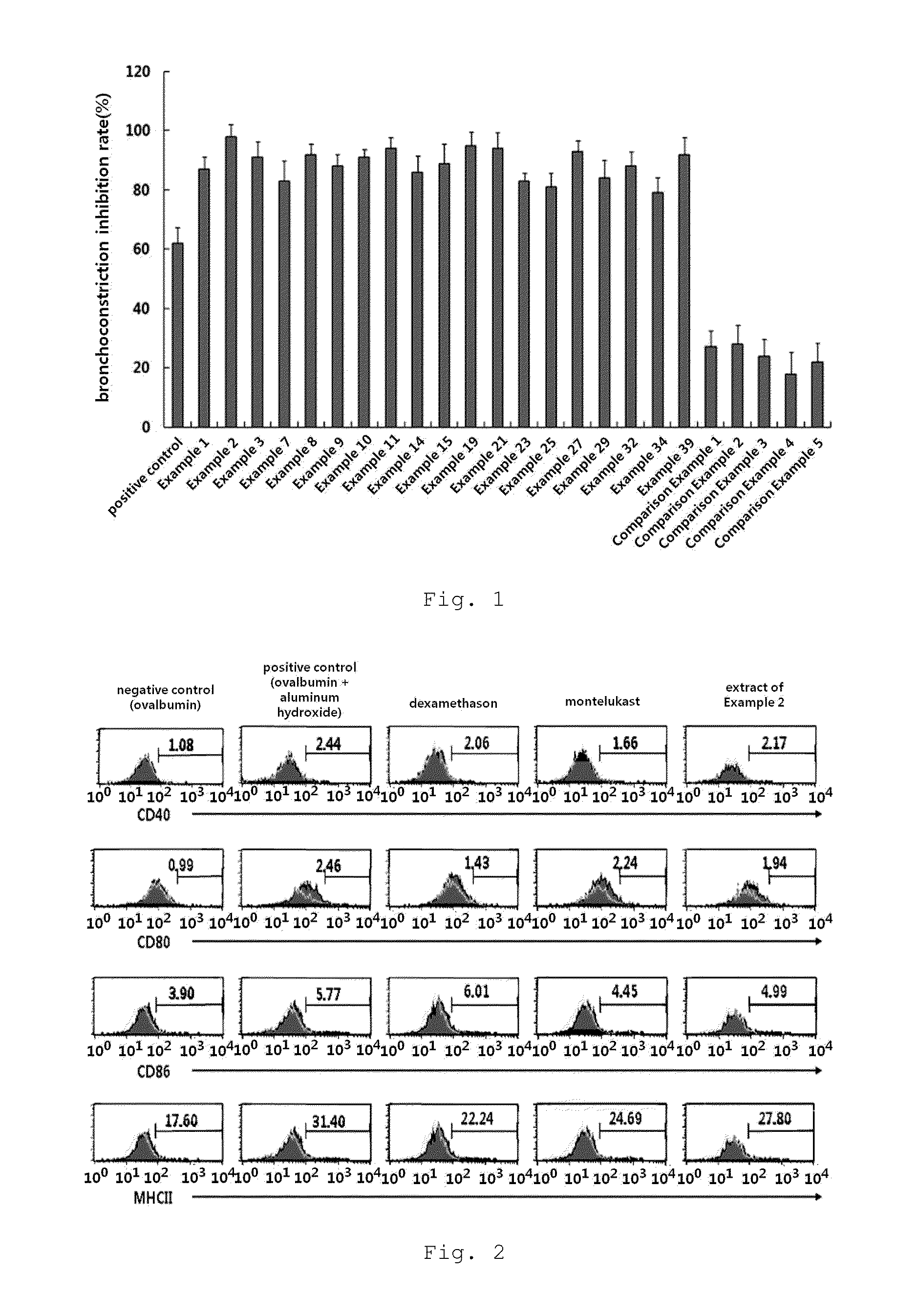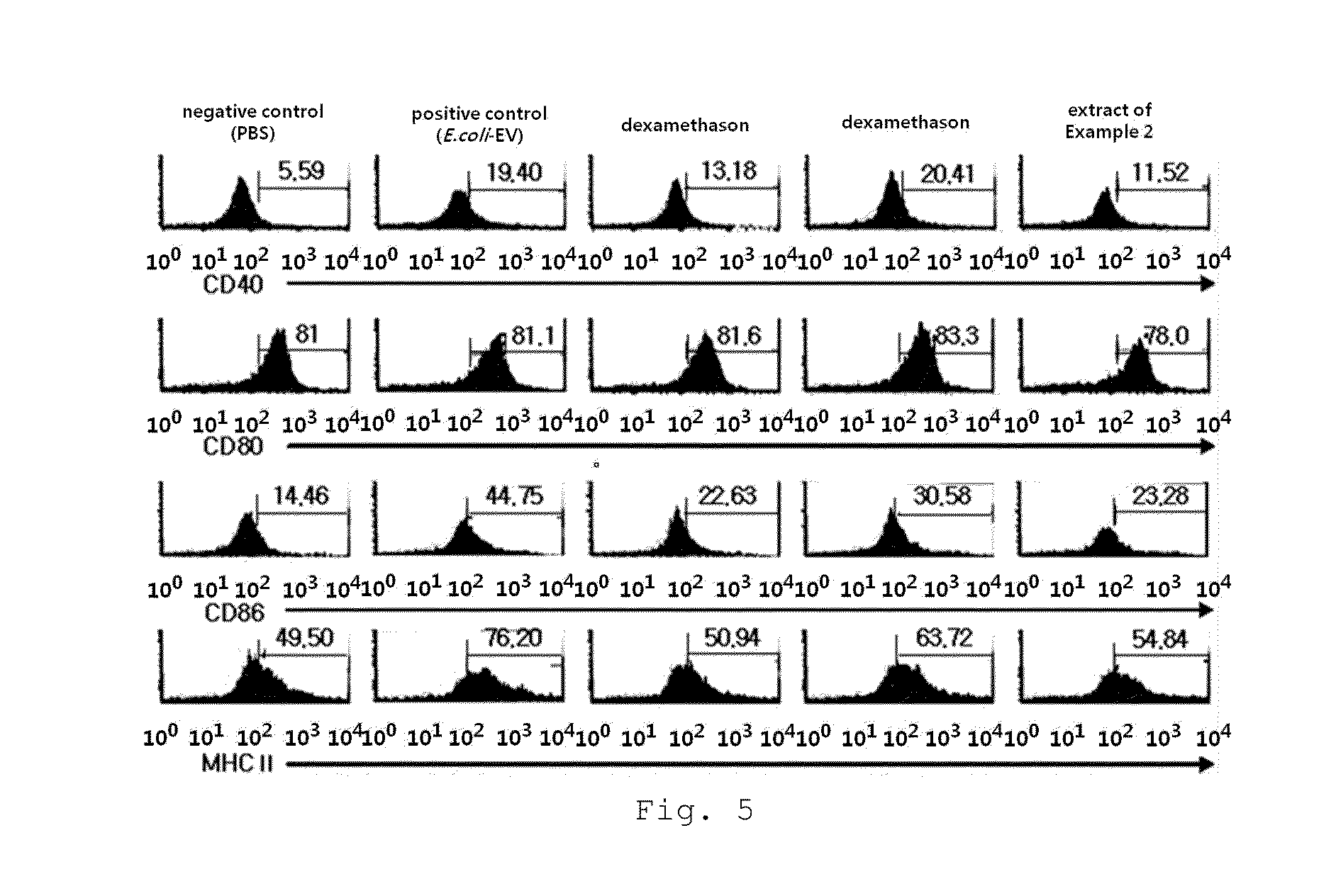Composition for preventing or treating a respiratory disease containing a mixed herbal extract of cnidium officinale root and polygoni cuspidati root
a technology of cnidium officinale and extract, which is applied in the directions of biocide, plant/algae/fungi/lichens, drug compositions, etc., can solve the problems of difficult studies on the cause of asthma, affecting the effect of asthma prevention and treatment, and affecting the effect of asthma prevention and treatment, and achieving excellent 5-liposygenase inhibitory activity, antitussive and expectorant activity, and good
- Summary
- Abstract
- Description
- Claims
- Application Information
AI Technical Summary
Benefits of technology
Problems solved by technology
Method used
Image
Examples
example 1
Preparation of Butanol Fraction of 50% Ethanol Aqueous Solution Extract of Cnidii Rhizoma+Polygoni Cuspidati Radix (1:1)
[0066]The crude extract obtained in Example 1 was suspended in a 10-fold volume (v / w) of purified water, and the suspension was added to the same amount of water-saturated butanol (80% butanol aqueous solution) so as to be separated into layers. The layer separation was performed twice. Then, the butanol layer was collected, filtered and concentrated under reduced pressure. After evaporation of butanol and purified water, the residue was azeotropically concentrated in about 100 ml of purified water, and the azeotropic concentration was performed twice, thereby completely removing the butanol. The resulting concentrate was suspended in a five-fold weight of distilled water, and then freeze-dried, thereby obtaining 5.6 g of a fraction as powder.
[0067]Examples 3 to 44 and Comparative Examples 1 to 5 were performed in the same manner as described in Examples 1 and 2 un...
formulation example 1
Preparation of Tablet
[0146]
Mixed extract of Example 2200 mgCorn starch 50 mgCellactose100 mgCrospovidone 20 mgLight anhydrous silicic acid 5 mgLactose 70 mgMagnesium stearate 5 mg
[0147]The above components were mixed with each other, and the mixture was compressed according to a conventional tablet preparation method, thereby preparing a tablet.
formulation example 2
Preparation of Powder
[0148]
Mixed extract of Example 2200 mgCorn starch 50 mglactose100 mgTalc 10 mg
[0149]The above components were mixed with each other, and the mixture was filled into an airtight packet according to a conventional powder preparation method, thereby preparing a powder formulation.
PUM
 Login to View More
Login to View More Abstract
Description
Claims
Application Information
 Login to View More
Login to View More - R&D
- Intellectual Property
- Life Sciences
- Materials
- Tech Scout
- Unparalleled Data Quality
- Higher Quality Content
- 60% Fewer Hallucinations
Browse by: Latest US Patents, China's latest patents, Technical Efficacy Thesaurus, Application Domain, Technology Topic, Popular Technical Reports.
© 2025 PatSnap. All rights reserved.Legal|Privacy policy|Modern Slavery Act Transparency Statement|Sitemap|About US| Contact US: help@patsnap.com



